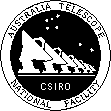

ATUC Meeting
Triennium Funding - Science Case
at the ATNF in Epping, Sydney
- March 23, 1999 -
Optic-Fibre Linked Interferometer
For the decade prior to its closure at the end of 1997, the "Parkes Tidbinbilla Interferometer", or PTI, proved a most successful instrument, producing a significant number of publications in a number of research areas. At the time of its construction, the microwave radio link used in the PTI was a significant technological innovation, although limited in bandwidth. However the advantages of a real-time interferometer over conventional recorder- based VLBI (ease and speed of data reduction, prompt response to transient sources and so on) eventually succumbed to the greater bandwidth, and hence sensitivity, of the S2 recorder system.The recent commissioning of a 100km optical-fibre link between the VLA and the Pie Town VLBA antenna (a project led by ATNF engineer Ron Beresford) has demonstrated the viability of this technique for single baseline interferometers, with potential bandwidths of several hundred MHz to GHz - far greater than can currently be achieved with the S2 recorder system.
Depending on the degree of access possible to the existing Telstra fibre network, the cost of a fibre-linked interferometer between Mopra and Narrabri (the shortest LBA baseline) is estimated to be about $AU1m, with an annual cost of possibly $AU50k/year. The cost for the longer Tidbinbilla-Parkes baseline could be similar, or even less, given the existing fibre links used by NASA for Galileo tracking. A real time link between the DSN 70m antenna and the Parkes 64M would constitute easily the most sensitive interferometer in the world, with a wide range of astronomical applications. The technological expertise acquired in such a project would be of manifest relevance to the Square Kilometer Array (SKA), where wide-bandwidth fibre links will be required to combine sub-clusters of collecting elements separated by 10s to 100s of km.
John Reynolds
24 February 1999
